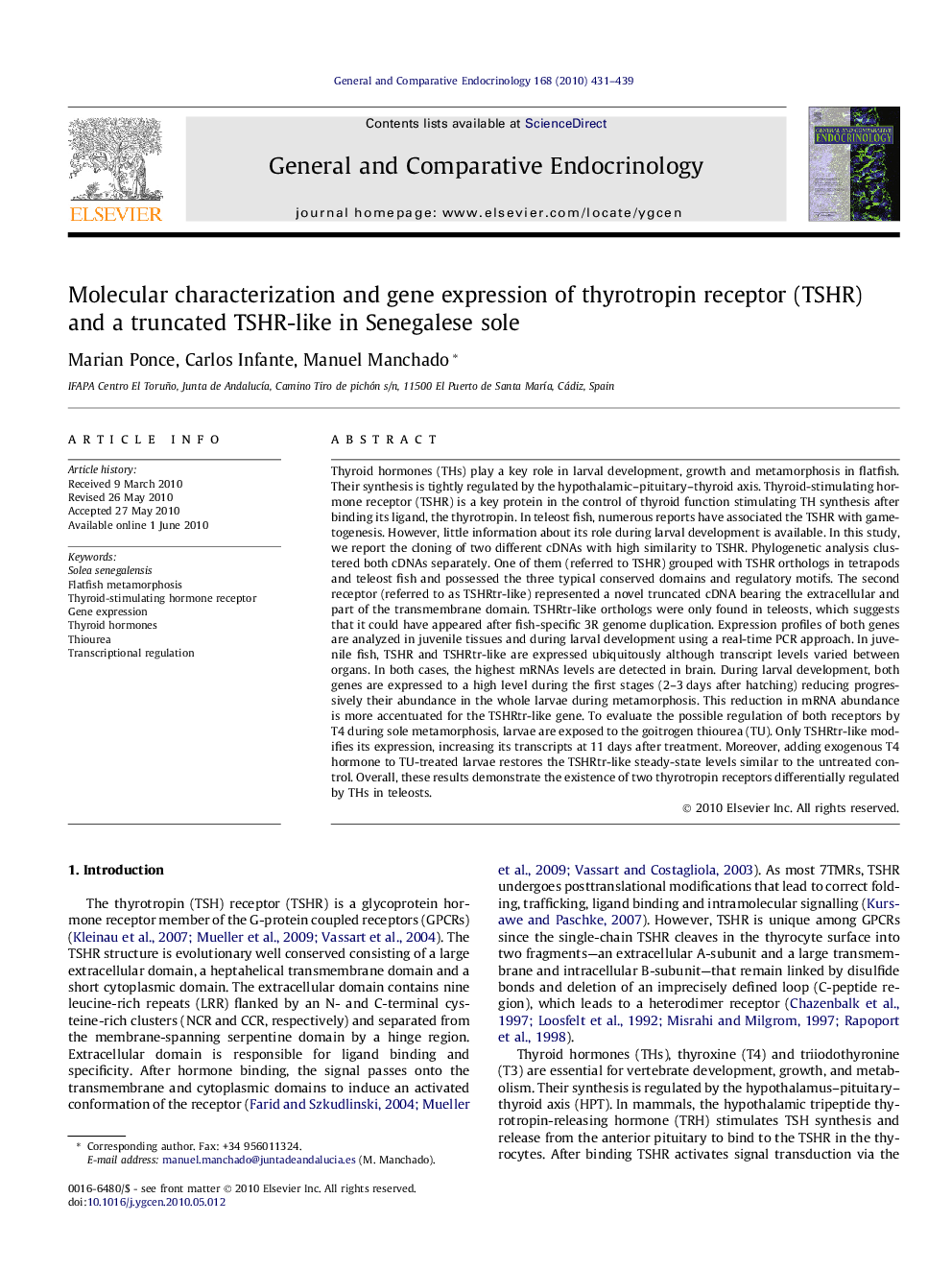| Article ID | Journal | Published Year | Pages | File Type |
|---|---|---|---|---|
| 2801024 | General and Comparative Endocrinology | 2010 | 9 Pages |
Thyroid hormones (THs) play a key role in larval development, growth and metamorphosis in flatfish. Their synthesis is tightly regulated by the hypothalamic–pituitary–thyroid axis. Thyroid-stimulating hormone receptor (TSHR) is a key protein in the control of thyroid function stimulating TH synthesis after binding its ligand, the thyrotropin. In teleost fish, numerous reports have associated the TSHR with gametogenesis. However, little information about its role during larval development is available. In this study, we report the cloning of two different cDNAs with high similarity to TSHR. Phylogenetic analysis clustered both cDNAs separately. One of them (referred to TSHR) grouped with TSHR orthologs in tetrapods and teleost fish and possessed the three typical conserved domains and regulatory motifs. The second receptor (referred to as TSHRtr-like) represented a novel truncated cDNA bearing the extracellular and part of the transmembrane domain. TSHRtr-like orthologs were only found in teleosts, which suggests that it could have appeared after fish-specific 3R genome duplication. Expression profiles of both genes are analyzed in juvenile tissues and during larval development using a real-time PCR approach. In juvenile fish, TSHR and TSHRtr-like are expressed ubiquitously although transcript levels varied between organs. In both cases, the highest mRNAs levels are detected in brain. During larval development, both genes are expressed to a high level during the first stages (2–3 days after hatching) reducing progressively their abundance in the whole larvae during metamorphosis. This reduction in mRNA abundance is more accentuated for the TSHRtr-like gene. To evaluate the possible regulation of both receptors by T4 during sole metamorphosis, larvae are exposed to the goitrogen thiourea (TU). Only TSHRtr-like modifies its expression, increasing its transcripts at 11 days after treatment. Moreover, adding exogenous T4 hormone to TU-treated larvae restores the TSHRtr-like steady-state levels similar to the untreated control. Overall, these results demonstrate the existence of two thyrotropin receptors differentially regulated by THs in teleosts.
